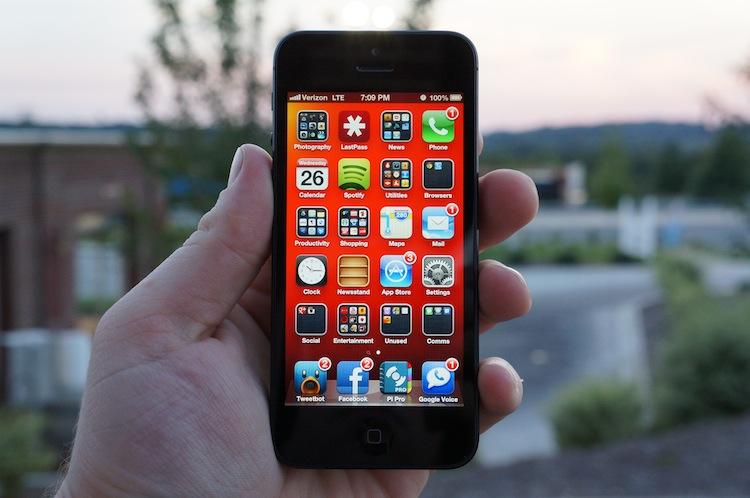
At long last, the long-rumored Apple iPhone 5 arrived last Friday and it is easily the most well put together smartphone we at PhoneDog have gotten our hands on. With a much-anticipated larger display, LTE connectivity, improved optics and oodles of enhancements in iOS 6, the iPhone 5 is exactly what Apple needed to stoke the fire. The iPhone 5 has everything it needed to both rack in new customers and keep upgrading customers content. Nothing more, nothing less.
With prices starting at $199 with a contract for the 16GB model and ranging to $399 with a two-year agreement for the 64GB version, the device is definitely one of the pricier devices money can buy. But does the iPhone 5 warrant such a large amount of money? Should you upgrade to the iPhone 5, save a few pennies and pick up last year's model or should you switch to Android or Windows Phone instead?
I have been using the iPhone 5 since it arrived on my doorstep on Friday morning, and here's what I've discovered:
Although Apple redesigned the iPhone 5 from the ground up (Phil Schiller told The Verge Apple "started from scratch" when designing the iPhone 5), it simply looks and feels like an iteration of the iPhone 4 and 4S before it. The body boasts a very familiar design, though the actual chassis is 20 percent lighter and 18 percent thinner than the 4S body. The frame is also 8.6mm (or roughly 1/3-inch) longer than the previous model.
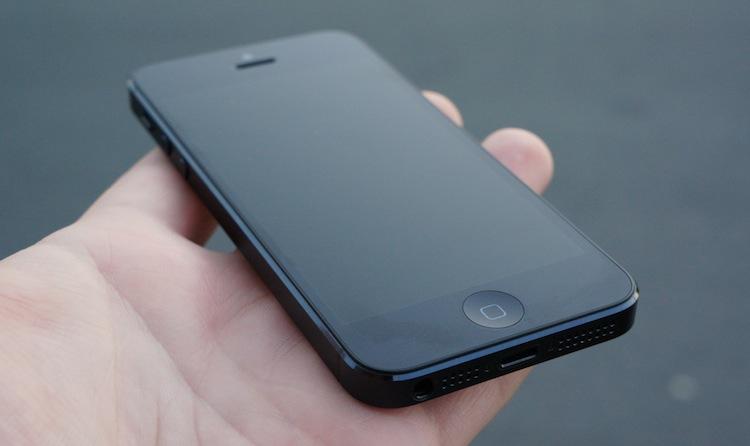
When you first pull the iPhone 5 out of the box it looks quite strange. It's very long and skinny. From the front, it looks nearly identical to the iPhone 4S, except it's noticeably longer which also gives it a more gaunt appearance despite being the same width as the previous model. On the bottom of the face, you will find the familiar, round home button. Above that is the 4-inch (1,136 by 640 pixels) display, an inset speaker grill and the front-facing camera. On the left side are the mute switch and volume up and down buttons. The top edge holds only the power button, while the right edge is home only to the nano SIM card slot. The bottom now holds a 3.5mm headphone jack, a microphone, the new 9-pin Lightning port and a loud speaker. On the upper portion of the back, above the matte finish anodized aluminum, are the 8-megapixel camera, another microphone and LED flash.
The matte black is very svelte, and the white model with a bare aluminum finish around back is also very classy. However, Apple is under scrutiny for the shape some individuals' iPhone 5s have arrived. Some have come with gashes and nicks on the antenna and rear panel. The iPhone 5 I ordered came with several noticeable nicks all around the antenna and one on the back plate, as did my mother's white model and a few colleagues' iPhone 5s. Luckily, several sources are reporting Apple stores and carriers have issued replacements, no questions asked.
Overall, the design is fantastic, the quality is second to none. Holding the iPhone 5 in your hand, it is extremely lightweight – not to the point it feels frail or cheap, though. But it is so light, it's initially surprising, and it almost feels like it could slip from your grip at any moment. And even after using the device for several days, the aspect ratio still looks a bit strange. I wouldn't recommend carrying an iPhone 5 without a case – reports indicate the back scratches very easily. I bought one for mine the night it arrived.
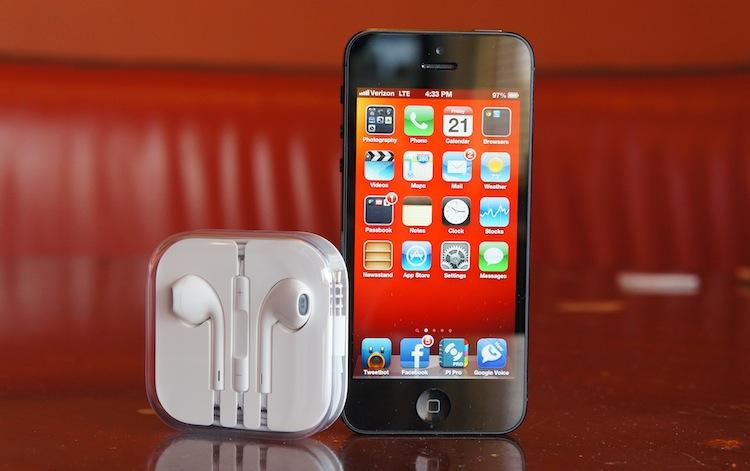
The iPhone 5 ships with Apple's latest mobile firmware, iOS 6. This version of iOS hosts a bevy of new features like enhancements to Siri, Facebook integration, shared Photo Streams, FaceTime over cellular, enhancements to Safari, Passbook and, most importantly, the new Maps app. Without a doubt, iOS 6 is an improvement over the last version, but just barely so. Despite over 200 improvements boasted by Apple, the changes are invisible to an untrained eye.
Unfortunately, one of the much-requested changes iOS 6 does not bring is a refreshed interface. At first glance, it is virtually indistinguishable from previous iterations of the software. As our own Aaron Baker said, the iOS interface is getting "long in the tooth." It's beginning to show its age in the multitasking menu, notifications and in the bare and simplified home screen. Other various areas are aging poorly, too, such as the convoluted Settings app.
Apple simply stretched the form factor of the iPhone 5 to make room for the additional display space, which some feel is a knee jerk reaction to the popularity of gargantuan Android phones. Apple bumped the display size a half-inch to 4-inches, diagonally. To maintain the Retina Display status, they added 176 vertical pixels to the count, keeping the horizontal pixels the same, totaling 326 pixels per inch.
It also appears as if Apple used an improved panel over the 4S, as colors seem to pop more. The level of contrast is astounding; blacks are very inky, almost totally blending with the bezel. Whites still have a bluish hue, though the display is noticeably warmer than the one on the iPhone 4S. In short, the display is as sharp, vibrant and beautiful as ever. That said, it is no longer the clear winner. Where the display on the iPhone 4 was the undisputed champion at its launch, devices like the HTC One X and Samsung Galaxy S III also tout beautiful and crisp displays at 720p resolution. And even though it's not available yet, the 4.5-inch PureMotion HD+ WXGA display on the Nokia Lumia 920 is already turning heads at 332ppi.
For the additional display space on the iPhone 5, Apple optimized iOS by adding another row of icons to the home screen, giving users five rows of icons plus the stationary dock. This alteration works out well. But the extra 176 vertical pixels cause a problem for applications that are not optimized for the new resolution, they're drawn to the middle of the display and given a small, black margin at the top and bottom of the display. On the black model, it's hardly noticeable at first. But if you launch an app that uses the keyboard and is not iPhone 5-compatible, you will certainly notice the keyboard jumping up a few dozen pixels (88, to be exact) when you go to type. The bigger problem is the number of applications that aren't yet optimized. I've noticed a few applications receiving updates over the last few days, but the majority on my phone still center align.

If you've ever used an iOS device, you already know performance has never been an issue. Apple holds a high standard when it comes to the performance of its devices, and the iPhone 5 is no exception. In the iPhone 5, Apple used the brand new A6 chip, clocked at 1.3GHz, which boasts twice the speed and graphics as last year's A5, not to mention, better battery life. Side by side with the iPhone 4S, the iPhone 5 is only ever-so-slightly snappier than the 4S. And through switching between applications and games, I have yet to bog the A6 down. The A5 was fast, and as far as average consumers will be concerned, the A6 is faster.
For some, the most important addition to the iPhone 5 is LTE connectivity. The iPhone comes in three flavors here in the U.S., although internally they're almost identical: AT&T, Sprint or Verizon. I picked up a Verizon model and have been testing speeds all throughout the Charlotte Metro area and even into Greensboro and surrounding areas. Speeds haven't been mind-blowing, but they have been decent – definitely better than the old 3G model. The fastest test yielded 18.11Mbps down and 19.44 up, but the average of all my tests is 12.37Mbps and 12.59Mbps down.
Although I'm never one to make many calls, the quality of calls on the iPhone 5 is surprisingly a high point. I placed and received several calls in a noisy coffee shop over the last few days. The recipient always sounded very clear and crisp, which is a far cry from the iPhone 4S. They also reported no problems hearing me despite a coffee grinder running in the background and multiple people talking in close proximity with me. Speakerphone is quite loud, too. However, the earpiece speaker was hard to hear at times, even with the volume turned all the way up and the trusty ol' finger ear plug trick. I ended up having to use the EarPods to finish some calls.
As for the EarPods, they're quite nice. I've been using them instead of the Logitech Ultimate Ears 600 earbuds I normally use since the iPhone arrived, and I'm rather impressed. They're a little heavy on the bass and don't cancel out as much background noise as the UE 600s, but they're loud and very comfortable, which is rare for me – I have strange ears. And the in-line microphone works quite well, too. For included earbuds, EarPods are great, and they're a huge improvement over the Apple earbuds of past.
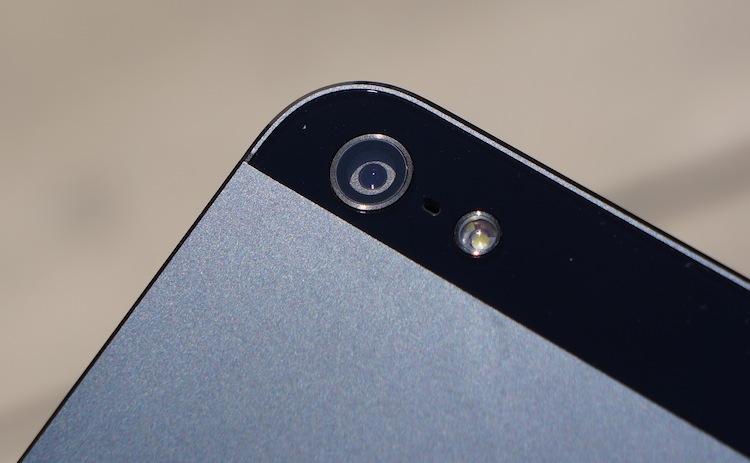
Like the iPhone before it, the iPhone 5 camera is fantastic. Despite the reduction in thickness, the iPhone 5 touts the same 8-megapixel sensor and five-element lens with f/2.4 aperture. Apple added backside illumination, a hybrid IR filter and a sapphire crystal lens to the iPhone 5, and the result is great photos and improved low-light performance. In normal fashion, I've been snapping pictures of everything that crosses my path. Unlike the iPhone 4S model, which would err on the side of under-saturating versus over-saturating photos, the 5 puts a little more oomph behind colors. More impressive than that, though, is depth of field, which I imagined would be the same. Maybe the secret lies in software optimization, or an added benefit of the A6 versus A5. Either way, depth of field using the iPhone 5 appeared to be better in my testing, yielding a nice bokeh. (Here's a full-res sample photo I took of some fake flowers at a Hobby Lobby on Saturday.)
I openly admit I haven't toyed with Panorama mode, which is an addition to the stock Camera app, all that much. I've been happily using AutoStitch for about a year. The inbuilt Panorama mode seems to be much more proficient – it yields photos with a more clean stitch and significantly larger output resolution. Apple's Panorama mode is nothing totally new, nor is it a feature specific to the iPhone 5 – the iPhone 4S received Panorama mode in the iOS 6 update last week. No less, it's capable of producing some nice landscape pictures, so long as your hands are moderately steady.
Even as I'm writing this review, I'm not even positive what I should write about the battery life on the iPhone 5. I've had both great days and bad days with the iPhone since Friday. At best, it's comparable to the iPhone 4S. That alone is surprising with the addition of LTE, which is known to munch on batteries for breakfast. The best battery life I've had, 100 percent battery to completely dead, was 31 hours with seven hours and eight minutes of moderate to heavy usage – taking oodles of pictures, a few videos, reading and replying to emails, Facebook, tweeting, a few hundred SMS and no more than 30 minutes of calls. One of the worst days left the phone at 43 percent after nine hours and two minutes, only three hours and two minutes of light usage. It's neither terrible or great, but right down the middle, which is fine. I only hope it stabilizes a little over a few more charge cycles.
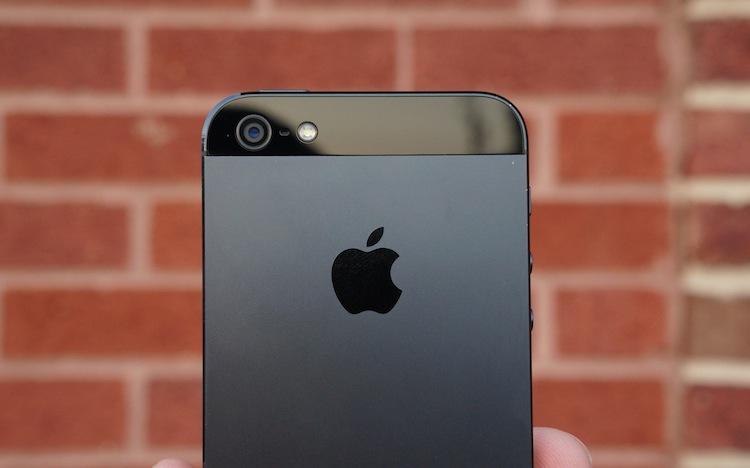
At the end of the day, the iPhone 5 is exactly what you would expect from Apple. It's just enough to keep existing iPhone users happy for another year and to bring in new users who are either brand new to smartphones or dissatisfied with their existing phone. But this year we saw a turning of the tides, where Apple is no longer pushing the envelope but instead playing a game of catch-up with its biggest competitors.
That, however, does not mean the iPhone 5 isn't a fantastic device. It quickly found its way to the top of our Official Smartphone Rankings™ despite only being added to the list of devices on Friday. Taking first place in the Mobile Tech Expert's Chart, the iPhone 5 beat the long-reigning champion, the Samsung Galaxy S III, by three expert points.
So should you pick up an iPhone 5? That's a difficult question to answer in such a limited amount of words. If you have the money and feel your old iPhone is too small or too slow (either in performance or network speeds), most definitely. If you, like me, have larger hands, something with a slightly wider display might suit your needs a little better – I'm always bumping thumbs on the iOS keyboard. And if you don't need LTE speeds and want to save a few bucks, there are plenty of cheaper options that are just as great, like the 16GB iPhone 4 for free with a two-year agreement or 16GB iPhone 4S for $99 with an agreement.
What's Good: Gorgeous, high contrast display; LTE connectivity; high quality design and feel; fantastic camera; reasonable price for lower capacity models; great ecosystem.
What's Bad: Largest model is $399 with a contract; back plate and antenna are very susceptible to scratches and chipping; Maps app is under scrutiny; only taller, the display still may seem small for some individuals.
The Verdict: The iPhone 5 is a fantastic smartphone. Although the materials used are debatable, the device itself is built really well, and it offers some great features, like a spectacular camera and the broad Apple ecosystem. It's the perfect phone for smartphone newbies and those a little more weathered in the area. However, iOS is beginning to show its age, and for the money, there are some better options currently available and on the horizon for true power users.